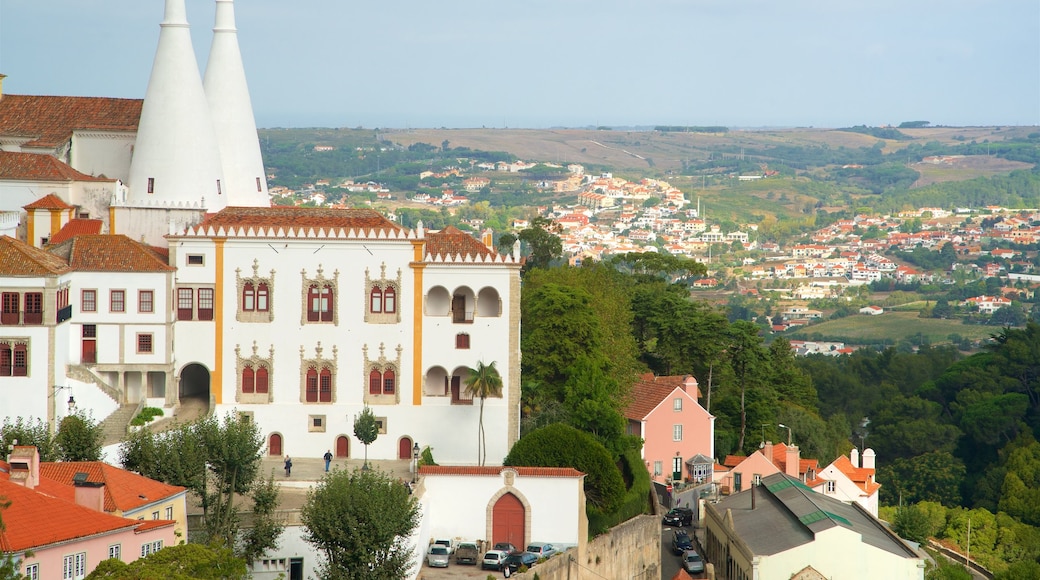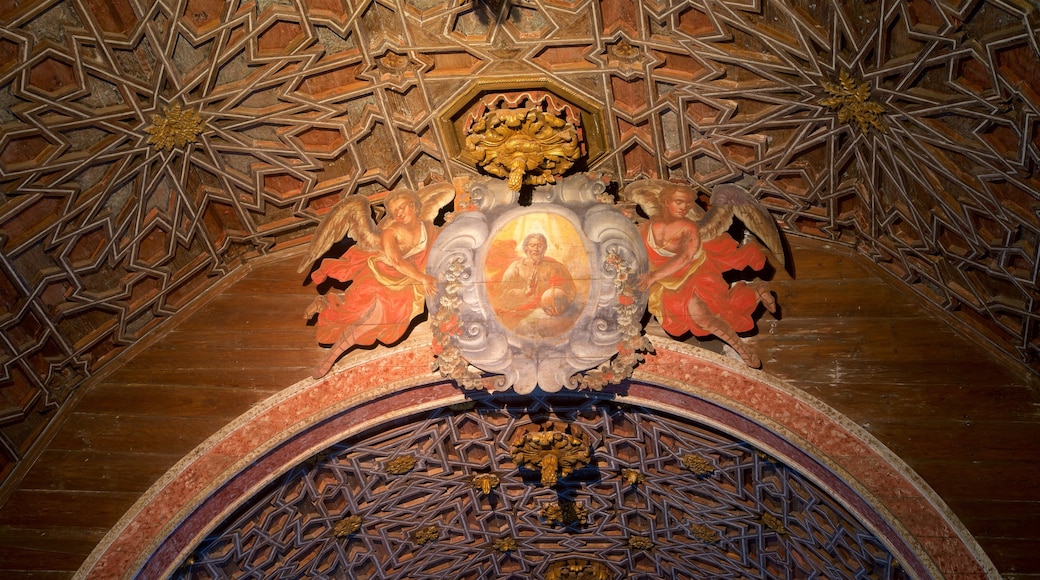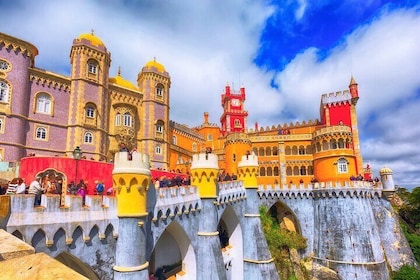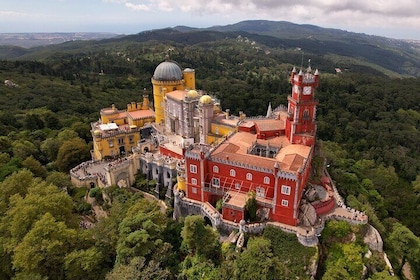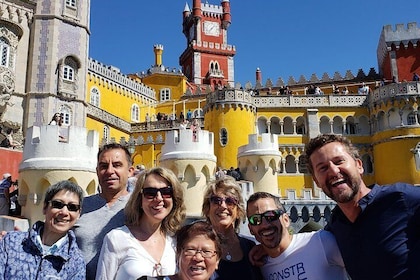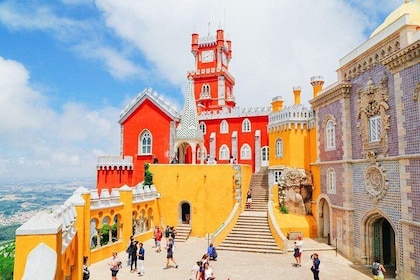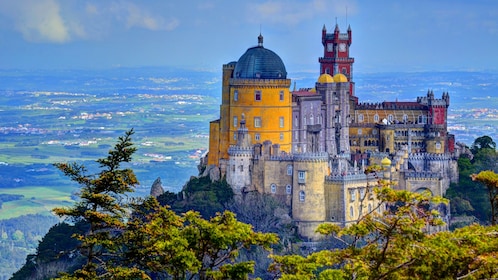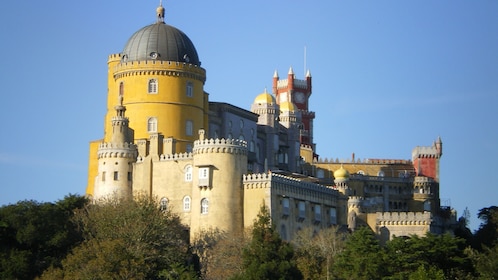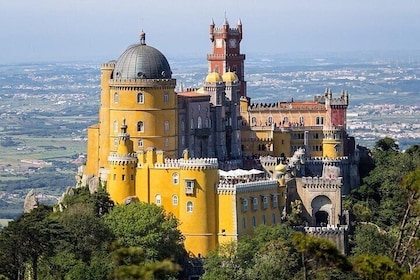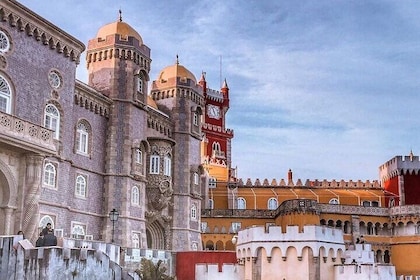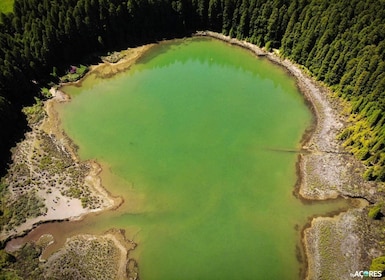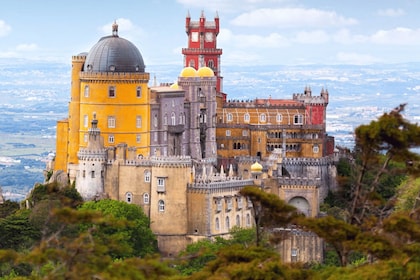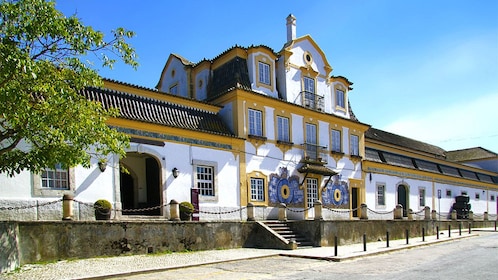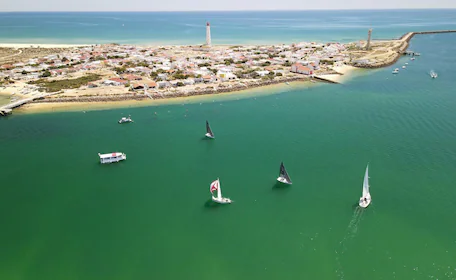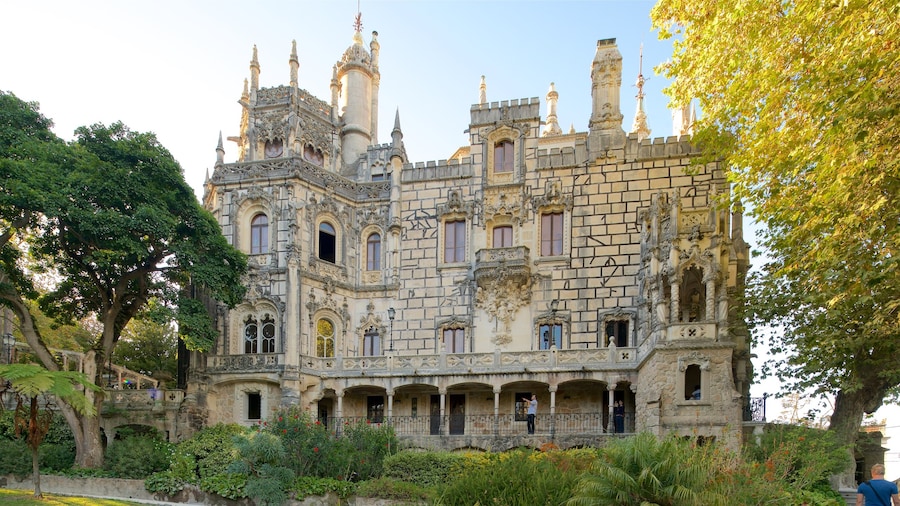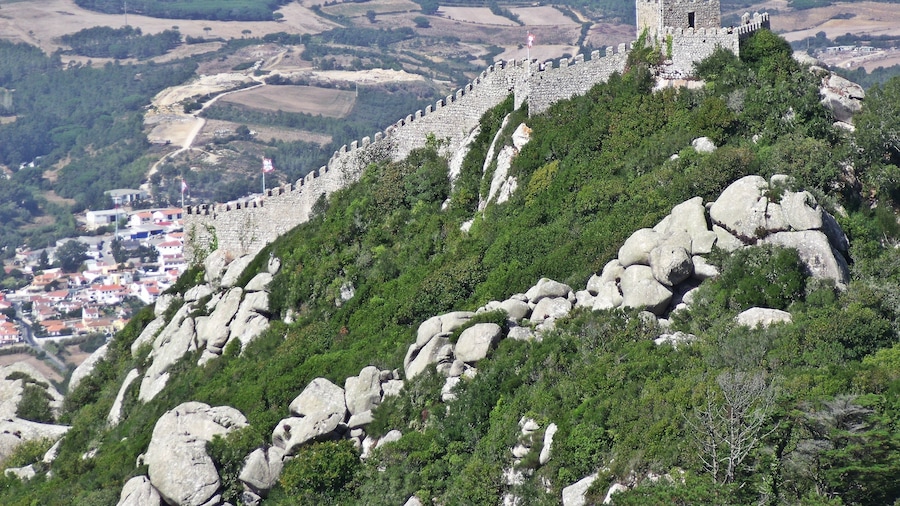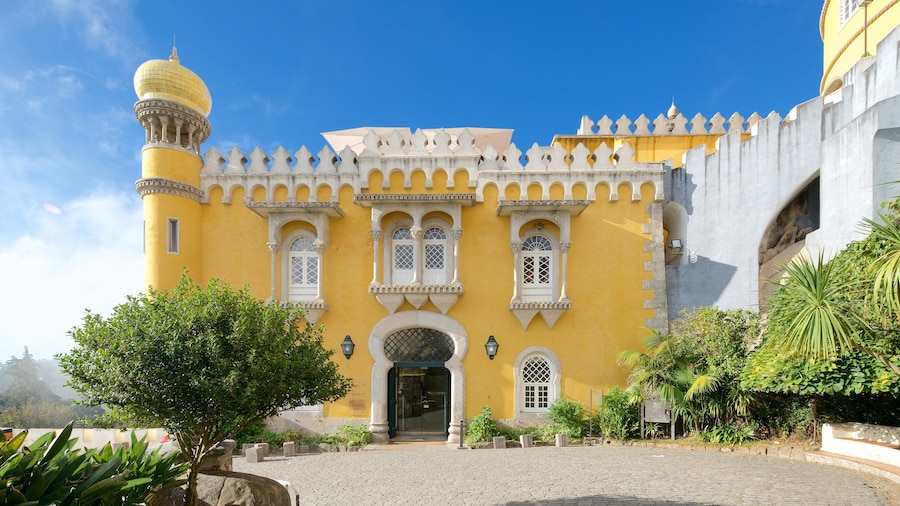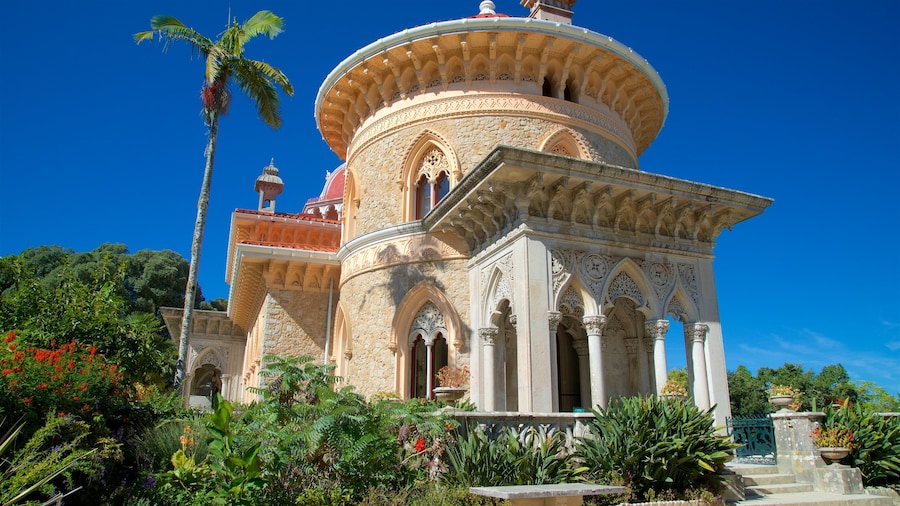Situated in the centre of Sintra, this medieval royal palace was classified a UNESCO World Heritage Site in 1995.
From the Moors to the nation’s first imperial dynasties, Sintra has always been one of the preferred places for Portugal’s rulers to build their royal palaces. And this one has to be one of the most impressive examples.
The 33 metre high conical chimneys of the Sintra National Palace are iconic symbols associated with Sintra. The design of the palace is an amalgamation of the various architectural styles favoured by the numerous resident kings these include Gothic, Manueline, Moorsih and Mudejar, making it a very intriguing piece of architecture.
The interior of the palace has several remarkable, ornate rooms. The ‘Swans Hall’, the largest room in the palace, is adorned with twenty-seven gold collared swans. The Magpies Room is famous for its ceiling fresco, decorated by one hundred and thirty-six magpies, roses in their talons and an emblem inscribed with ‘for honour’ in their beaks. Apparently King John I had the room decorated with as many magpies as there were women in the court because they chattered like magpies, churning the rumour mill.
One of the rooms has a much darker history. There is only room that has a window covered with iron bars. When King Pedro II deposed his brother King Afonso VI on the grounds of his mentally instability, this is where he was imprisoned for the rest of his days.
An impressive and grand Portuguese palace with a storied history. Surely an attraction not to be missed.

